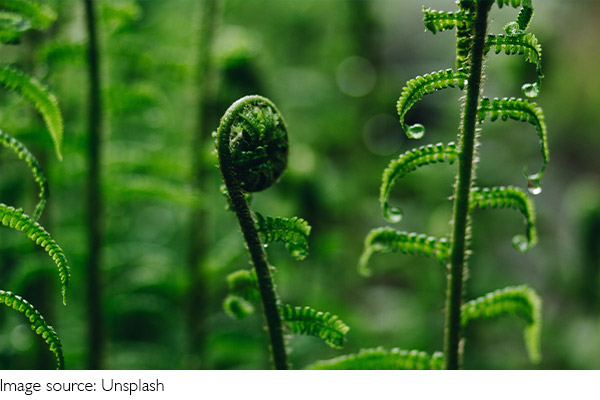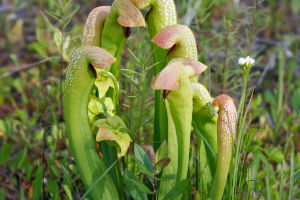Plant Defense Secrets

When danger approaches, animals can run, hide, or bite back—but plants? They stay put. Yet staying rooted doesn’t mean they’re easy targets. Over millions of years, plants have developed surprisingly sophisticated ways to protect themselves from being eaten.
In this journey through the green world, we’ll uncover the remarkable ways plants shield themselves from being eaten. By the end, you’ll never look at a thorny rose or bitter leaf the same way again!
Physical Barriers: Tough and Spiky
One of the simplest ways plants protect themselves is through their structure.
Many plants develop tough leaves, thick stems, or waxy coatings that make them harder to chew or pierce. Some even grow spines or thorns, which can discourage animals from getting too close.
Cacti are famous for their sharp spines, while rose bushes use thorns to protect their tender stems and flowers. Even tiny hairs on leaves, called trichomes, can act as a first line of defense by trapping insects or making the surface uncomfortable to land on.
Chemical Defenses: Nature's Pharmacy
Plants are also brilliant chemists. Many species produce special chemicals to make themselves less appealing—or even toxic—to potential threats.
Here are a few common strategies:
• Bitter compounds (like tannins) make leaves and seeds unappetizing.
• Toxic alkaloids can poison or deter herbivores. For example, milkweed produces chemicals that make it toxic to most animals—except for monarch butterflies, which have adapted to tolerate it.
• Essential oils in herbs like basil, mint, and lavender not only attract pollinators but can also repel pests.
Dr. Jack Schultz, a plant ecologist at the University of Missouri, explains: "Plants are constantly under attack. They can't move, so they rely on chemistry to protect themselves."
Signal Systems: Calling for Help
Some plants take defense to another level by actively signaling for help when attacked.
For example, when certain plants are chewed by caterpillars, they release volatile organic compounds (VOCs) into the air. These scents attract predatory insects such as parasitic wasps, which then target the caterpillars.
In a way, the plant is calling for reinforcements! This strategy helps reduce the number of herbivores attacking the plant.
Rapid Response: Changing Tactics in Real Time
Plants aren't passive victims—they can adjust their defenses depending on what's happening around them.
Studies show that when a plant detects damage, it can quickly increase its production of defensive chemicals or strengthen its cell walls.
Some plants even "learn" from past attacks. If they experience repeated damage, they may ramp up their defenses faster in future encounters. This ability to adapt makes plants far more dynamic than we often assume.
Camouflage and Mimicry
Not all defenses are physical or chemical—some plants rely on clever visual tricks.
Certain orchids, for example, mimic the appearance of unappealing leaves or even of other dangerous plants. This camouflage helps them avoid being eaten.
In other cases, plants mimic the warning colors of toxic species, fooling herbivores into leaving them alone.
Why This Matters
Understanding plant defenses isn't just fascinating—it has real-world importance. Experts like Dr. Ian Baldwin, a scientist at the Max Planck Institute for Chemical Ecology, emphasize that "studying plant defense mechanisms helps us develop better, more sustainable pest management strategies."
By learning from plants, researchers can create natural pest repellents and improve agricultural practices—reducing the need for synthetic chemicals.
How We Can Support Our Plants
As plant lovers, there are simple ways we can help our garden plants protect themselves:
• Choose pest-resistant plant varieties when possible.
• Provide balanced nutrients so plants have the energy to maintain their defenses.
• Encourage beneficial insects that can assist plants in their fight against pests.
By supporting these natural defense systems, we not only help our plants thrive but also create healthier, more balanced ecosystems.

The Hidden Strength of Plants
Plants may appear gentle and passive, but beneath those green leaves lies a world of sophisticated survival strategies. From sharp spines to chemical weapons and secret signals, they are masters of self-protection.
Next time you admire a tree, flower, or even a humble wild plant, remember—you're looking at a living organism that has evolved countless ways to stay safe in a challenging world.
Have you ever noticed a plant defending itself in your garden or on a nature walk? We'd love to hear your stories! Let's keep exploring the secret life of plants together! 🌿🛡️✨
-
 The Face of a PredatorDarlingtonia californica: The Carnivorous Plant That Hunts with a Mask
The Face of a PredatorDarlingtonia californica: The Carnivorous Plant That Hunts with a Mask -
 Pest Control ShowdownNatural vs Chemical Methods: Effective and Safe Ways to Protect Your Flowers and Plants from Common Pests and Diseases!
Pest Control ShowdownNatural vs Chemical Methods: Effective and Safe Ways to Protect Your Flowers and Plants from Common Pests and Diseases! -
 Vitamins for SkinWhich vitamins in plants are best for maintaining healthy, glowing skin? Let's explore the most beneficial nutrients!
Vitamins for SkinWhich vitamins in plants are best for maintaining healthy, glowing skin? Let's explore the most beneficial nutrients!